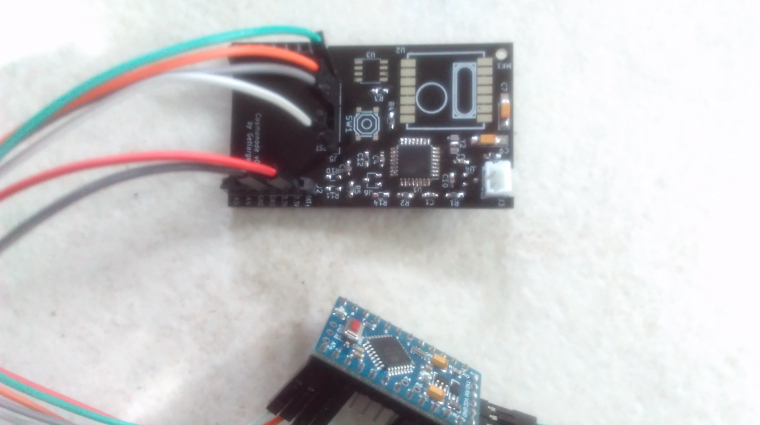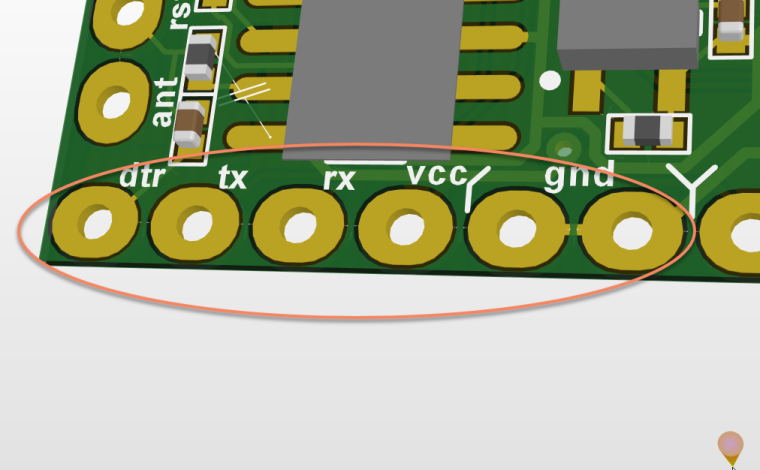💬 Button size radionode with sensors swarm extension
-
@Nca78 said in 💬 Button size radionode with sensors swarm extension:
@alexsh1 said in 💬 Button size radionode with sensors swarm extension:
However, actively measuring current - 4.5mA
This would kill 2032 very quicklyMatter of hours I guess, it's half more than the max continuous discharge current of a CR2032.
It is 4.mA for 120ms for less just for measurements
However, I agree that this is not very battery friendly@alexsh1 said in 💬 Button size radionode with sensors swarm extension:
@Nca78 said in 💬 Button size radionode with sensors swarm extension:
@alexsh1 said in 💬 Button size radionode with sensors swarm extension:
However, actively measuring current - 4.5mA
This would kill 2032 very quicklyMatter of hours I guess, it's half more than the max continuous discharge current of a CR2032.
It is 4.mA for 120ms for less just for measurements
However, I agree that this is not very battery friendlyAh ok I completely misunderstood :D But yes seems high for a CR2032 sensor...
-
@Koresh,
I tried to buy some of these on the link you provided, but couldn't do it. Do you still have this component in your stock ? I like to buy 865mhz HW/W versions. -
@Abdu-Sahin said in 💬 Button size radionode with sensors swarm extension:
865mhz HW/
Hi
They will be ready end of this week. do you need both HCW and CW versions?
-
@Abdu-Sahin said in 💬 Button size radionode with sensors swarm extension:
865mhz HW/
Hi
They will be ready end of this week. do you need both HCW and CW versions?
@yury
I like to try both 865 HW/W versions. I need sensors with long battery life and good RF distance coverage for my project. I've noticed some people suggested using only 'W' version for battery powered nodes, but from my initial experience I didn't have good distance with 'W' version. -
@yury
I like to try both 865 HW/W versions. I need sensors with long battery life and good RF distance coverage for my project. I've noticed some people suggested using only 'W' version for battery powered nodes, but from my initial experience I didn't have good distance with 'W' version.@Abdu-Sahin said in 💬 Button size radionode with sensors swarm extension:
I need sensors with long battery life and good RF distance coverage
)) either good battery life or good coverage though... or good coverage and 2-3 AA batteries. CW is 20 mA when sending signal and HCW is about 100 mA. CR2032 battery will be drained by HCW pretty fast.
HW/W versions have bigger footprints (Module Size:19.7X16mm) and not compatible with the "Button size".
HCW/CW (Module Size:16X16mm) are equivalents for HW/W. -
@Abdu-Sahin said in 💬 Button size radionode with sensors swarm extension:
I need sensors with long battery life and good RF distance coverage
)) either good battery life or good coverage though... or good coverage and 2-3 AA batteries. CW is 20 mA when sending signal and HCW is about 100 mA. CR2032 battery will be drained by HCW pretty fast.
HW/W versions have bigger footprints (Module Size:19.7X16mm) and not compatible with the "Button size".
HCW/CW (Module Size:16X16mm) are equivalents for HW/W.@yury
I think I can start with CW version as start. Battery life is important for me. -
@yury
I think I can start with CW version as start. Battery life is important for me.@Abdu-Sahin said in 💬 Button size radionode with sensors swarm extension:
Battery life is important
sent you a message in the chat...
-
@Abdu-Sahin said in 💬 Button size radionode with sensors swarm extension:
Battery life is important
sent you a message in the chat...
@yury
You can email me if you like.
My email is uk.asahin at gmail com -
@yury
You can email me if you like.
My email is uk.asahin at gmail com@Abdu-Sahin I was interested in reading your conversation about battery life etc. I hope you will continue the conversation on the forum instead of in private.
Thanks.
-
It is possible to buy only PCB ? Upload PCB to OSH Park, or send PCB in eagle. I do not have Altium Designer... Thx
-
It is possible to buy only PCB ? Upload PCB to OSH Park, or send PCB in eagle. I do not have Altium Designer... Thx
@Miroslav-Kadaně I've just uploaded latest gerbers (rfm reset pin was connected to controller, connection of si1132 was fixed, reverse battery polarity protection was added). You can place PCB order at any factory. :wink:
-
Few months ago, I've ordered some of your nodes, which work perfectly by the way, but I needed something that could speed up testing of any sensors.
So following our conversation on Github with Yury, I've created a PCB based on your Button size node, with a field for an extension board. The aim is to have a versatile board, and extensions that could handle virtually any sensors, like NodeManager project, but for hardware ;)
And it's also a first time experiment in the land of PCBs

Apart 2 errors ( maybe more in the future !), it seems to be well routed, as tests been proving, but i still not tried the FOTA function.
Errors was a badly routed button and it seems that, after the RFM chip is soldered, communication with USBasp gets bad! Is it because SCK and MISO route ( from pin headers to atmega328 ) goes through the RFM chip before atmega ?You were mentioning some mods in dualoptiboot in order to flash M25P40, https://forum.mysensors.org/topic/3160/ota-flash-types-for-mysensors/43.
Would it be possible to share these ?And just out of curiosity, how did you manage to solder SI7021 and TSL2561 ?
By now, it seems like a mystery for me... -
Few months ago, I've ordered some of your nodes, which work perfectly by the way, but I needed something that could speed up testing of any sensors.
So following our conversation on Github with Yury, I've created a PCB based on your Button size node, with a field for an extension board. The aim is to have a versatile board, and extensions that could handle virtually any sensors, like NodeManager project, but for hardware ;)
And it's also a first time experiment in the land of PCBs

Apart 2 errors ( maybe more in the future !), it seems to be well routed, as tests been proving, but i still not tried the FOTA function.
Errors was a badly routed button and it seems that, after the RFM chip is soldered, communication with USBasp gets bad! Is it because SCK and MISO route ( from pin headers to atmega328 ) goes through the RFM chip before atmega ?You were mentioning some mods in dualoptiboot in order to flash M25P40, https://forum.mysensors.org/topic/3160/ota-flash-types-for-mysensors/43.
Would it be possible to share these ?And just out of curiosity, how did you manage to solder SI7021 and TSL2561 ?
By now, it seems like a mystery for me...@getlarge said in 💬 Button size radionode with sensors swarm extension:
after the RFM chip is soldered, communication with USBasp gets bad
Did you solder R4 (from your schematic https://github.com/getlarge/Cosmonode/blob/master/Cosmonode_sch.pdf)? I can't find it on the boards photo.
PS
Will share compiled bootloader and sources soon. -
@Koresh said in 💬 Button size radionode with sensors swarm extension:
Sorry, picture's quality is not too good!
R4 ( 10Kohm) is soldered. I read about that pullup resistor that is needed to sync with atmega SCK. Any other hint on what could cause that ?
Maybe, that was a mistake when i changed the fuse? but I didn't have problem before with these settings.So I'll have to be patient to use M25P40!
-
@chbla said in 💬 Button size radionode with sensors swarm extension:
Maybe a stupid question but how do you connect the FTDI adapter? I only know the ISP pins
Can anyone quickly tell me how to do it correctly? I thought it didn't work but I'm unsure.
-
@chbla said in 💬 Button size radionode with sensors swarm extension:
Maybe a stupid question but how do you connect the FTDI adapter? I only know the ISP pins
Can anyone quickly tell me how to do it correctly? I thought it didn't work but I'm unsure.
-
@Koresh Might be a dumb question I am planning to work on this board, where do I find the complete part list.
-
Does any one have links to dirty pcb or OSH Park? Thanks a lot

